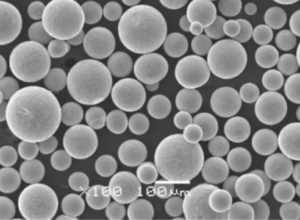3Dプリンティングとして知られる積層造形は、複雑なカスタム設計部品の製造を可能にすることで、製造業に革命をもたらした。さまざまな積層造形技術がある、 バインダージェッティング積層造形 (BJAM)は、その多用途性と費用対効果の高さで際立っている。この記事では、バインダージェッティングの世界を深く掘り下げ、広範な概要を提供し、特定の金属粉末モデルを検証し、この技術の用途、利点、限界について説明します。経験豊富なプロフェッショナルの方にも、バインダージェッティングの概念に初めて触れる方にも、このガイドブックはバインダージェッティングの内部と外部を順を追って説明し、必要な情報を確実に提供します。
バインダージェッティング積層造形の概要
バインダージェッティングは、粉末ベースの材料と液体の結合剤を組み合わせたユニークな積層造形技術である。熱を使用して材料を融合させる他の3Dプリンティング手法とは異なり、バインダージェッティングは、このバインダに依存して所望の形状を作成します。このプロセスは通常、層ごとに行われ、結合剤が金属またはセラミック粒子を選択的に接着し、固体の物体を形成する。
バインダージェッティングは、金属からセラミック、砂に至るまで、様々な材料を扱うことができるため、汎用性の高い選択肢となります。さらに、熱を加えないため熱歪みのリスクが低く、複雑な形状や繊細な構造物に最適です。
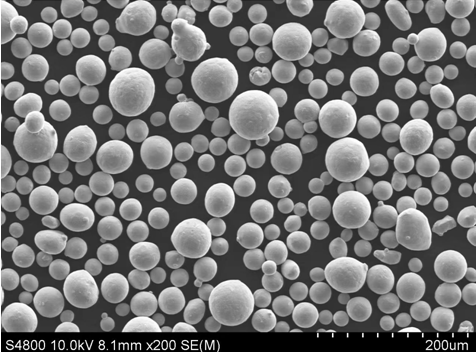
バインダージェッティング積層造形の組成
バインダージェッティングは、粉末材料と液体バインダの組み合わせを利用します。バインダージェッティングで使用される粉末材料は、最終製品の特性にとって非常に重要です。以下は、バインダージェッティングで使用される特定の金属粉末モデルの詳細な内訳です。
バインダージェッティングにおける特定の金属粉末モデル
| 金属粉モデル | 構成 | プロパティ | 特徴 | 用途 |
|---|---|---|---|---|
| Inconel 625 | ニッケル・クロム | 高強度、優れた耐疲労性 | 耐食性、良好な溶接性 | 航空宇宙、海洋、化学処理 |
| 316Lステンレス鋼 | 鉄-クロム-ニッケル | 優れた耐食性、優れた強度 | 延性、生体適合性 | 医療用インプラント、自動車、食品加工 |
| 17-4 PHステンレス鋼 | 鉄-クロム-ニッケル-銅 | 高強度、高硬度 | 析出硬化、耐食性 | 航空宇宙、原子力、化学産業 |
| コバルト・クロム | コバルト・クロム | 高い耐摩耗性、生体適合性 | 緻密で強い | 歯科インプラント、航空宇宙、医療機器 |
| 銅(Cu) | 純銅 | 優れた電気伝導性、熱伝導性 | 可鍛性、延性 | 電気部品、熱交換器 |
| チタン(Ti-6Al-4V) | チタン・アルミニウム・バナジウム | 高い強度対重量比、耐食性 | 生体適合性、強度 | 航空宇宙、医療用インプラント、スポーツ用品 |
| アルミニウム (AlSi10Mg) | アルミ・シリコン・マグネシウム | 軽量、強度良好 | 高熱伝導性、延性 | 自動車、航空宇宙、家電 |
| ブロンズ | 銅-錫 | 高耐食性、良好な加工性 | 緻密で強い | 芸術的彫刻、ベアリング、ブッシュ |
| 工具鋼(H13) | クロムモリブデン | 高硬度、耐摩耗性 | 耐熱性、強靭 | 金型 |
| ニッケル合金718 | ニッケル・クロム・鉄 | 優れた高温強度、耐食性 | 時効硬化性で強い | 航空宇宙、発電、石油・ガス |
の特徴 バインダージェッティング積層造形
バインダージェッティング積層造形の特徴は、他の積層造形技術とは一線を画しています。主な特徴の内訳は以下のとおりです:
素材の多様性
バインダージェッティングは、金属、セラミック、さらには砂を含む幅広い材料に対応します。この多用途性により、航空宇宙から歯科まで、さまざまな産業での応用が可能です。
表面仕上げ
バインダージェッティングの特筆すべき特徴のひとつは、きめ細かい表面仕上げを実現できることです。レイヤーバイレイヤーデポジションと微細なパウダー粒子が滑らかな表面に貢献し、大規模な後処理の必要性を低減します。
生産スピード
バインダージェッティングは、比較的生産速度が速いことで知られています。このプロセスは大きな熱エネルギーを必要としないため、大量のパーツを素早くプリントすることができ、プロトタイピングと製造の両方に適しています。
熱ストレスなし
選択的レーザー焼結(SLS)や直接金属レーザー焼結(DMLS)などの他の方法とは異なり、バインダージェッティングは高温を伴いません。このため、熱応力がなく、最終製品に反りや歪みが生じるリスクが低くなります。
デザインの柔軟性
バインダージェッティングでは、複雑な形状や複雑なデザインも簡単に実現できます。この方法では、内部空洞や格子構造など、従来の製造では困難だった形状を作ることができます。
バインダージェッティング積層造形の用途
バインダージェッティング積層造形は、その汎用性と複雑な部品を製造する能力により、さまざまな産業で応用されています。以下に、主な用途をいくつか紹介します:
| 申し込み | 説明 | 産業 |
|---|---|---|
| プロトタイピング | テストと検証のための複雑な形状の部品のラピッドプロトタイピング | 自動車、航空宇宙、消費財 |
| 金型 | 様々な製造工程で使用される耐久性のある工具や金型の製造 | 射出成形、ダイカスト |
| 医療機器 | カスタムインプラント、手術器具、歯科器具の製造 | 医療、歯科 |
| 航空宇宙部品 | 高い強度と耐食性を備えた軽量で複雑な部品の製造 | 航空宇宙、防衛 |
| 自動車部品 | エンジン部品などの自動車用カスタム部品や複雑な部品の製造 | 自動車 |
| 芸術品と装飾品 | さまざまな金属粉を使った細密彫刻、ジュエリー、装飾品の制作 | アート、ファッション、インテリア |
| 熱交換器 | 高熱伝導性材料による複雑な熱交換器設計の製造 | HVAC、産業機器 |
| 電気部品 | コネクターやバスバーなど、導電性に優れた部品の製造 | 電子工学、電気工学 |
| 鋳造パターン | 金属鋳造用砂型および中子の製造 | 鋳造、金属鋳造 |
| 研究開発 | 新製品やイノベーションのためのカスタム材料および設計試験 | 研究開発、学術機関 |
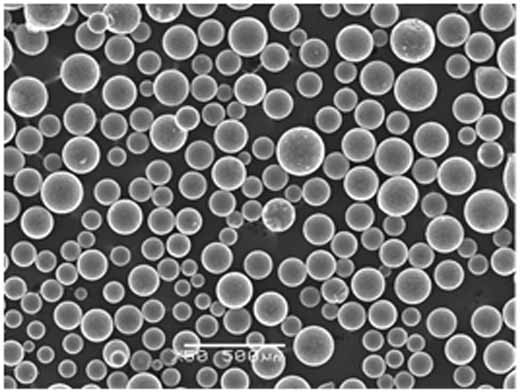
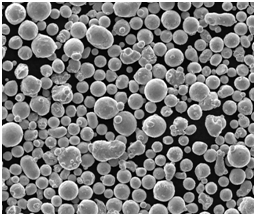
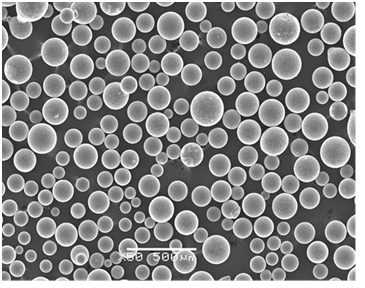
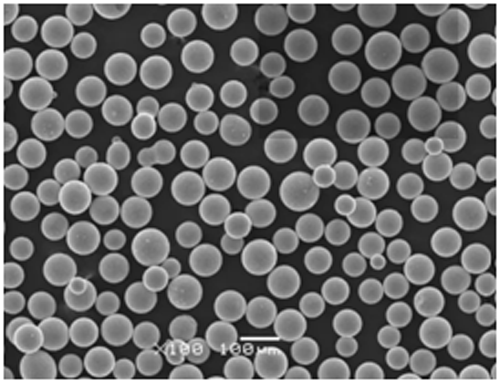
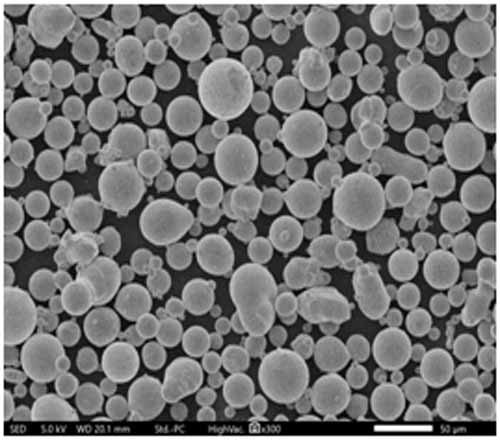
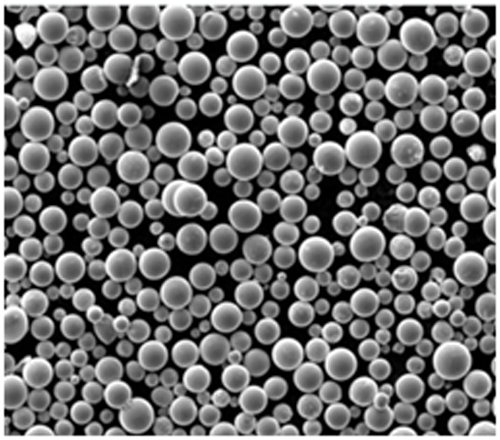
バインダージェットの仕様、サイズ、等級、規格
バインダージェットに関連する仕様、サイズ、等級、規格を理解することは、部品が業界の要件を満たすことを保証するために非常に重要です。以下は、これらの側面を概説した詳細な表です:
| 素材 | グレード/規格 | 代表的なサイズ | 仕様 |
|---|---|---|---|
| Inconel 625 | 5666、B443 | 粉体サイズ: 15-45 µm | 密度:8.44 g/cm³、融点:1290-1350°C |
| 316Lステンレス鋼 | ASTM F138、ISO 5832-1 | 粉体サイズ: 15-53 µm | 密度:7.99 g/cm³、融点:1371°C |
| 17-4 PHステンレス鋼 | AMS5643、ASM564 | 粉体サイズ: 10-45 µm | 密度:7.80 g/cm³、硬度:HRC 40-47 |
| コバルト・クロム | ASTM F75、ISO 5832-4 | 粉体サイズ:10~30 µm | 密度:8.30 g/cm³、融点:1330-1390°C |
| 銅(Cu) | ASMB124、AMS4501 | 粉体サイズ: 15-60 µm | 密度:8.96 g/cm³、融点:1083°C |
| チタン(Ti-6Al-4V) | ASM1472、AMS4911 | 粉体サイズ: 15-45 µm | 密度 4.43 g/cm³, 融点: 1600-1660°C |
| アルミニウム (AlSi10Mg) | ISO 3522 | 粉体サイズ: 20-63 µm | 密度:2.68 g/cm³、融点:577-660°C |
| ブロンズ | ASTM B584、SAE J463 | 粉体サイズ:20~80 µm | 密度:8.7-8.9 g/cm³、融点:950-1050°C |
| 工具鋼(H13) | ASTM A681 | 粉体サイズ: 10-50 µm | 密度:7.80 g/cm³、硬度:HRC 50-52 |
| ニッケル合金718 | AMS 5662、ASM B670 | 粉体サイズ: 15-53 µm | 密度:8.19 g/cm³、融点:1260-1336°C |
サプライヤーと価格詳細
バインダージェッティング用の金属粉末を調達する場合、信頼できるサプライヤーと価格を考慮することが不可欠です。以下の表は、候補となるサプライヤーの概要と、さまざまな金属粉のおおよその価格を示しています。
金属粉:
| サプライヤー | 素材 | 価格(概算) | 備考 |
|---|---|---|---|
| GKNアディティブ | インコネル625、316L SS、Ti-6Al-4V | kgあたり100ドル – 300ドル | 高品質パウダー、グローバルサプライヤー |
| ヘガネスAB | 17-4 PH SS、アルミニウム、青銅 | kgあたり150ドル – 400ドル | 大手金属粉末メーカー、カスタム処方 |
| カーペンター添加剤 | コバルトクロム、ニッケル合金718 | 200ドル – kgあたり500ドル | プレミアム素材、航空宇宙、医療 |
| サンドビック積層造形 | 工具鋼H13、銅 | kg あたり $120 – $350 | 先進素材、広範な研究開発能力 |
| LPWテクノロジー | さまざまな金属粉末 | kg あたり $180 – $450 | 高性能パウダー、業界標準 |
| アルカムAB(GEアディティブ) | チタン合金、インコネル718 | 250ドル/kg; 600ドル/kg | 航空宇宙および医療用途に特化 |
| AP&C (GEアディティブ社) | アルミニウム、ステンレス鋼 | 200ドル – kgあたり500ドル | 高品質球状粉末の専門家 |
| EOS GmbH | さまざまな金属粉末 | kg あたり $220 – $550 | 一貫性と品質で知られる |
| レニショー・ピーエルシー | ステンレス鋼、チタン | kgあたり190ドル – 480ドル | 精密工学と先端材料 |
| タニオビス社 | コバルトクロム、ニッケル合金 | kgあたり$210 – $550 | 研究開発に重点を置いた革新的なマテリアル・ソリューション |
の利点と限界 バインダージェッティング積層造形
他の製造工程と同様、バインダージェッティングにも長所と短所があります。これらを理解することで、この方法がお客様のプロジェクトに適しているかどうかを判断することができます。
メリット
| メリット | 説明 |
|---|---|
| 素材の多様性 | バインダージェッティングでは、金属、セラミック、砂など、さまざまな材料を使用できるため、用途に柔軟に対応できる。 |
| 熱歪みなし | 工程に熱がないため、部品に反りや残留応力がなく、精度が高い。 |
| 高速生産 | 大量ロットの迅速な生産に適したバインダージェッティングは、試作と生産の両方に効率的です。 |
| 優れた表面仕上げ | 微粒子のパウダーを使用しているため、表面は滑らかで、後処理の必要性を減らすことができる。 |
| 複雑な幾何学 | 従来の製造方法では困難だった複雑なデザインや内部形状の作成に最適。 |
制限事項
| 制限 | 説明 |
|---|---|
| 材料の気孔率 | 部品は、完全な密度を達成するために浸潤や焼結を必要とする場合があり、これは追加のステップとコストを追加する。 |
| 機械的特性 | バインダージェット加工部品の機械的強度は、DMLSや鋳造などの他の方法で製造された部品に及ばない場合があります。 |
| 後処理の要件 | 表面仕上げは良好だが、用途によっては機械加工や浸潤などの追加的な後処理が必要な場合もある。 |
| 素材選択の制限 | 汎用性が高いとはいえ、すべての材料がバインダージェッティングに適しているわけではなく、特に高温合金はその傾向が強い。 |
| 金属粉末のコスト | 金属粉末のコストは、特に高品質な用途の場合、かなりのものになる。 |

よくある質問
この包括的なガイドの最後に、バインダージェッティングに関するよくある質問と回答をまとめました。
| 質問 | 回答 |
|---|---|
| バインダー・ジェットに使用できる材料は? | バインダージェッティングでは、ステンレス、インコネル、チタンなどの金属、セラミック、砂など、さまざまな材料を使用することができます。 |
| バインダージェッティングは大量生産に適していますか? | はい、バインダージェッティングは生産速度が速いので、特に複雑な部品の大量生産に適しています。 |
| バインダージェッティングの主な利点は? | 主な利点は、材料の多様性、熱歪みのなさ、生産速度の速さ、複雑な形状の作成能力などである。 |
| バインダージェットの部品は工業用として十分な強度がありますか? | バインダージェット部品は多くの用途に適していますが、望ましい機械的特性を得るためには、焼結などの後処理が必要になる場合があります。 |
| バインダージェットと他の積層造形法との比較は? | バインダージェッティングは、特定の用途ではより速く、より費用対効果が高いが、DMLSのような方法と比べると機械的強度の点で劣る可能性がある。 |
| バインダージェット加工された部品にはどのような後処理が必要ですか? | 素材によっては、強度や表面仕上げを向上させるために、焼結、浸潤、機械加工が必要になる場合もある。 |
| バインダージェットは医療用インプラントに使用できますか? | はい、特にチタンやコバルトクロムのような生体適合性の高い材料では、バインダージェッティングはカスタムメイドの医療用インプラントの製造に使用されています。 |
| バインダージェッティングは複雑な形状をどのように扱うのですか? | バインダージェッティングは、内部構造やオーバーハングを含む複雑な形状を、支持構造を必要とせずに製造することに優れています。 |
| バインダージェット用金属粉末の一般的なコストは? | バインダージェッティング用の金属粉末は、材質や品質によって1キログラム当たり100ドルから600ドルの幅がある。 |
| バインダージェッティング用金属粉末の主要サプライヤーは? | 主要サプライヤーには、GKN Additive、Höganäs AB、Carpenter Additive、Sandvik Additive Manufacturing、EOS GmbHなどがある。 |
結論
バインダージェッティング積層造形 は、3Dプリンティングの世界において多用途で効率的な手法です。幅広い材料に対応し、優れた表面仕上げで複雑なパーツを製造できる3Dプリンティングは、さまざまな産業に大きな可能性をもたらす手法だ。しかし、他の製造工程と同様に、特に材料の密度や機械的特性に関する限界があります。バインダージェッティングの全容を理解することで、使用される特定の金属粉末からアプリケーション、関係するサプライヤーまで、プロジェクトに対する適合性について十分な情報を得た上で決定することができます。航空宇宙、自動車、医療、芸術のどの分野においても、バインダージェッティングはイノベーションと生産の可能性を広げます。
この技術をさらに探求しようとする人々にとって、サプライヤーとつながり、特定の材料特性を調べることは、バインダージェッティングの可能性を最大限に活用するための重要なステップとなるだろう。

